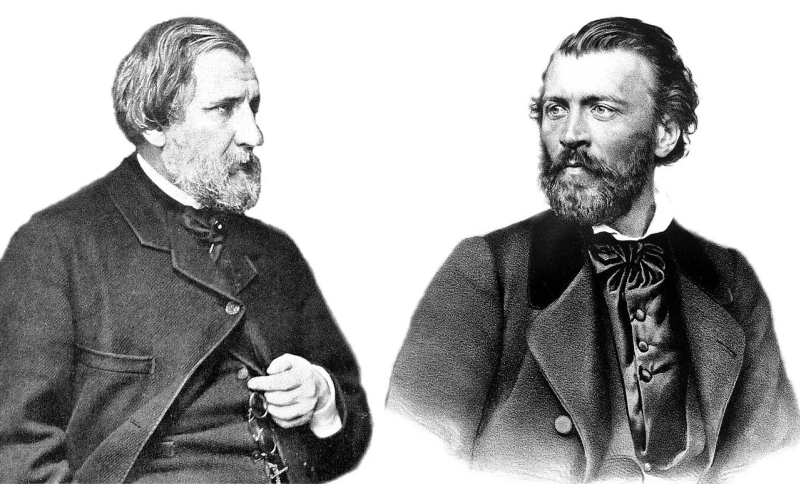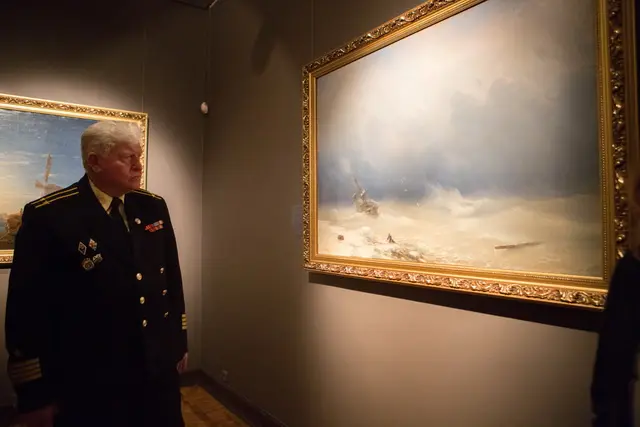He studied at the Academy of Arts; received gold medals for "View in the vicinity of Vyborg" and "View of Lakhta, near St. Petersburg." In the Caucasus, engaged in the study of mountain nature. Eight years spent in Italy. For the pictures brought from there: "The Fountain of Annibal, in Rocca di Papa" (in the Tretyakov Gallery), "Capo di Monte, in Sorrento" (in the Academy Museum) and the "Pontic Marshes" received in 1860 the title professors. During the second trip to the Caucasus, he led to participate in cases against the Highlanders. In 1885, having received the highest order for several paintings on subjects from the Russian-Turkish war, he visited a theater of military operations in European and Asian Turkey. In addition to numerous oil paintings, Lagorio wrote watercolor drawings, mostly made of sepia and ink. In the museum of Alexander III - "View of the seashore" (1872), in the Tretyakov Gallery - "Norman coast", "Batum", etc.
Born in Lev Feliksovich in Feodosia, in the family of a merchant, merchant, mason Felix Lagorio (1781-1857), Vice-Consul of the Kingdom of Both Sicilies, descended from an aristocratic Genoese clan. He graduated from Theodosia gymnasium. In 1839–1840, he worked in the Feodosia workshop of I. K. Aivazovsky. In 1842, with the assistance of Tavria Governor A.I. Kaznacheyev, he entered the Imperial Academy of Arts, where he studied at the expense of Duke Maximilian of Leuchtenberg. His teachers were A.I. Zauerveyd and M.N.Vorobyov, then B.P. Vilelevalde.
In the summer of 1845, he sailed on the military frigate “The Dangerous,” in 1846, sailed in his own boat along the shores of the Gulf of Finland. In 1847 he was awarded a small silver medal for the "Finnish view", in 1848 - a large silver medal for a sketch from nature. Three years after admission he was awarded the 2nd gold medal for his work "View in the vicinity of Vyborg". In 1850 he received the title of artist of the XIV class and the 1st gold medal for "View of Lakhta, near St. Petersburg." During his student life he participated in the creation of a portrait of Kozma Prutkov.
In 1851 he was sent at government expense to the Caucasus. In 1852 he took Russian citizenship, went after graduating from the Academy on a pensioner's trip to Europe. Where he spent eight years. During 1853 he lived in Paris, where he studied the painting of French masters in the Louvre and the Luxembourg Palace. In 1854 he moved to Rome. In 1857, after the end of the pension, he received permission to extend his stay abroad with his own money for a period of two years.
Upon returning to Russia in 1860, he received the title of professor for the paintings he brought in: “The Fountain of Annibal, in Rocca di Papa”, “Capo di Monte, in Sorrento” and “Pontina Marshes”.
In 1861, he traveled to the Caucasus, after which he presented three paintings of Caucasian species to Emperor Alexander II: "Daryal Gorge", "Elbrus" and "Gut-Gora", for which he was awarded the Order of St. Anna of the 3rd degree.
In 1863, he again went to the Caucasus, in the retinue of Grand Duke Mikhail Nikolayevich, where he was led to participate in "affairs against the highlanders", for which he was awarded swords to the order he had. In 1864 he returned from the Caucasus and finally settled in St. Petersburg, spent the summer months in Sudak, where he had a workshop and also annually made trips abroad and trips around Russia.
In 1885 he received an order for a series of paintings with a plot about the Russian-Turkish war, visited the battle sites in the Asian and European theater of operations.
In 1900, Lev Lagorio was elected an honorary member of the Academy of Arts.
-
Artworks liked by92 users
- Artworks in 4 collections and 67 selections
Exhibitions
All exhibitions of the artist



















